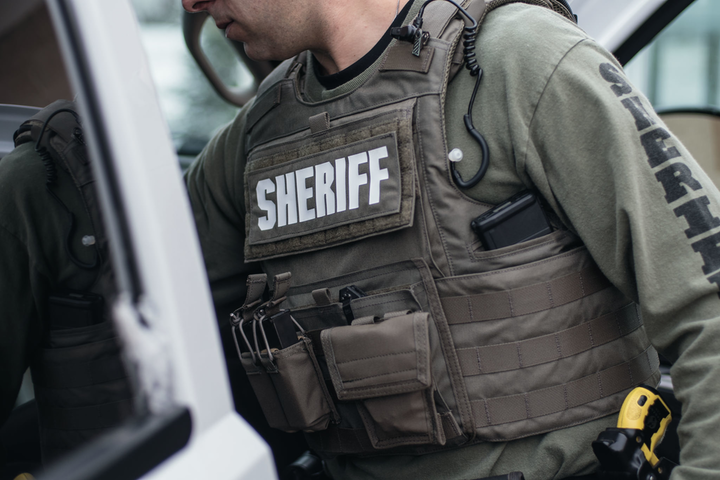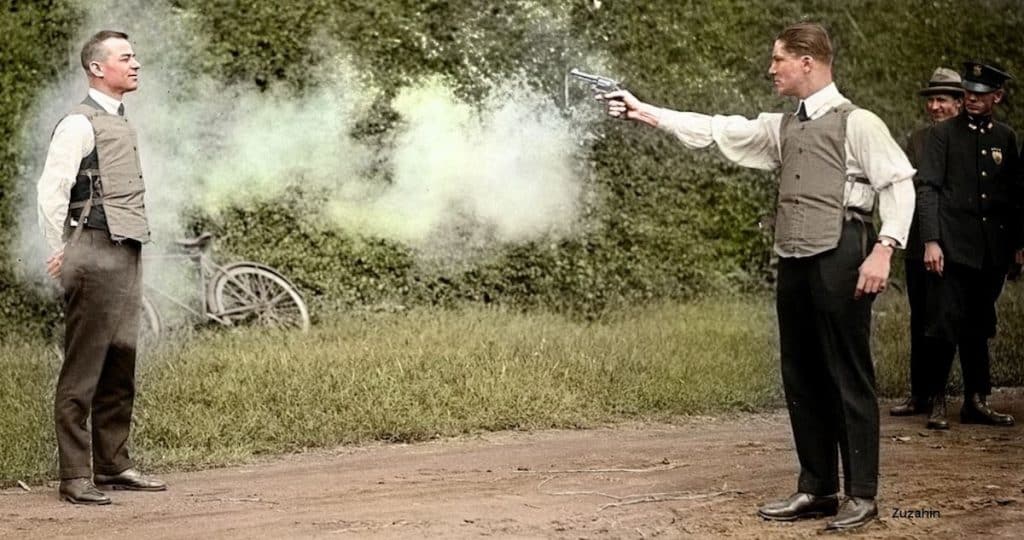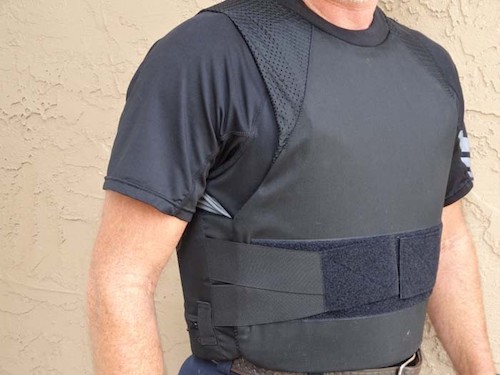If a major crisis hits without warning — whether a sudden outbreak of violence, a fast-spreading epidemic, or a chaotic active-shooter situation — protecting yourself turns into a very practical priority. People often imagine extreme scenarios, but even the more common emergencies can put someone at real risk. That’s where reliable body armor becomes part of the larger emergency mindset: the idea that you prepare to avoid wounds, stop threats, and keep yourself functional when life gets messy.
Body armor sits in the “prevent holes” category of readiness — meaning it’s one of the tools that shields your body from damage rather than treating injury afterward. But choosing the right armor isn’t simple. After spending more than a hundred hours researching and comparing over two hundred forty armor products, patterns quickly emerged: a confusing market, too much bad advice, and an endless list of tradeoffs that make a first-time buyer feel lost.
Some plates stop one common AR-15 round but fail against another. Steel plates are thin but heavy, ceramic is light but bulky, and plastic composites sit awkwardly in between. Prices jump all over the place. And the armor industry itself is full of misinformation, exaggerated marketing claims, and even companies attacking each other under fake names.
Yet for all the chaos, civilians today have better and more affordable options than ever before. Many people spend far more on entertainment or gadgets than a set of plates that could save their life during a rare but devastating event. Even if your armor sits untouched for a decade, having it ready is worth the peace of mind once you’ve covered your other preparedness basics.
This guide focuses entirely on the armor plates — the part that actually stops the rounds — not the carriers or vests that secure those plates to your torso.
Sometimes the protective layer and carrier come integrated together (like many soft vests), but for most realistic prepping situations, especially when rifles are involved, you’ll be dealing with separate plates inserted into a rigid or semi-rigid chest harness.
Below is the expanded breakdown of the most important concepts, tradeoffs, and real-world performance details every civilian buyer should understand before investing in armor.
A quick overview of what this guide covers
• Differences between soft and hard armor
• What armor levels actually mean
• Realistic threat data
• How steel, ceramic, and plastic plates behave
• Why weight matters more than most people expect
• Plate sizes, cuts, and how they affect comfort
• The messy reality of the armor marketplace
• Our criteria for choosing reliable, trustworthy plates
Why you can trust this review
We went far beyond casual browsing. Over a hundred hours of hands-on research went into this analysis, comparing more than 240 products and recording detailed performance data on around ninety. We dug into forums, long-form reviews, independent tests, and expert interviews — from manufacturers to military veterans, self-defense instructors, and seasoned preppers who actually train in these setups.
Many of the plates mentioned here have been purchased, worn, and tested personally by the authors in both civilian and military procurement environments. We focused on factors that matter in real emergencies, not just polished marketing claims.
Why civilians buy body armor
Civilian buyers face a very different reality from soldiers or private security professionals. A plate carrier isn’t about playing action hero or surviving movie-style shootouts. It’s a tool you hope you’ll never need, but you keep it for the same reason you keep a fire extinguisher or a trauma kit: rare events still happen.
People buy armor for many reasons:
• Training and range work — Wearing armor adds realism to defensive training and reduces exposure during dynamic drills where accidental discharges are possible.
• Home protection — For some, it becomes part of the “middle-of-the-night plan” when checking a suspicious noise.
• Sheltering at home — During civil unrest or disaster situations, armor becomes useful around your property.
• Active-shooter preparedness — Many keep a plate or soft insert in a backpack as a quick shield during unpredictable situations.
• Protecting kids — Some parents equip backpacks with soft armor inserts.
• Neighborhood patrols during crises — In worst-case scenarios, armor can make scouting or protecting an area safer.
Realistically, the majority of people won’t be marching around in full tactical gear — but armor offers a rare type of protection that becomes priceless the moment it’s needed.
Body armor laws
Body armor laws vary by region, but in most of the United States, civilians can legally purchase armor without background checks. Felons are prohibited from owning armor, and Connecticut requires in-person sales. Some vendors now verify ID before shipping, especially for international orders.
International restrictions vary widely:
• The UK is fairly permissive
• EU nations range from mild regulations to strict controls
• Several Canadian provinces require security licensing
• Australia has outright banned civilian armor in most cases
Political pushes to restrict armor come and go, but for now, most Americans can purchase it freely.
“Bulletproof” doesn’t actually mean bullet proof
No armor is invincible. Movies distort reality, making vests look like magic shields. In truth, every plate can be defeated — whether by extreme, high-velocity rounds or by repeated shots in the same location. Even when a plate stops a bullet, the force transmitted to your body will hurt.
Think of body armor as risk reduction, not full immunity. It protects vital organs and buys you crucial seconds in a dangerous event, but it cannot make you impervious.
Body armor types
Armor gets confusing because brand names often blend with classes. Kevlar and Dragon Skin are brands, not levels. The fundamental split is simple:
• Soft armor (fabric-based, flexible)
• Hard armor (rigid plates made of steel, ceramic, or polyethylene)
Soft vests combine the carrier and the ballistic material into one piece. They’re good against pistols, knives, and shotguns.
Soft armor vests are typically worn under clothing, but they provide no protection from rifle rounds.
Hard plates, on the other hand, slide into dedicated pockets on a plate carrier.
These carriers don’t just secure the plate; they also serve as a mounting platform for tools, radios, magazines, and other gear.
Hard and soft inserts can be mixed — such as placing a soft trauma pad behind a hard plate to reduce felt impact.
Trauma pads are labeled “non-ballistic” because their job isn’t to stop bullets but to cushion your body from the sudden force.
Hard vs. soft armor and how it actually protects you
At the simplest level, all armor does one of two things: it either catches the bullet and slows it down over a wide surface, or it destroys the bullet and spreads the impact across a larger area of your body. The details of how it does that depend on whether you’re dealing with soft armor or rigid plates.
Soft armor is essentially a tightly woven, high-strength fabric net. When a pistol round hits it, the material flexes and pulls tight, soaking up the bullet’s energy the way a shirt resists you poking a finger straight through it. The bullet deforms and slows, and the force is distributed over many fibers instead of one tiny point.
Hard armor behaves more like a wall. When struck, the bullet shatters or mushrooms, and the plate spreads that energy across its surface. You still feel a punch behind the plate — sometimes a very serious one — but the armor prevents the projectile from penetrating into your chest.
Soft armor is mainly intended for knives, low-energy shrapnel, pistols, and shotguns. Hard armor expands your protection to include rifles and many explosive fragments. That difference is crucial for preppers, since common emergency scenarios involve rifles far more often than people like to admit.
Soft armor can come as:
-
Complete vests you wear under or over clothing
-
Flexible inserts you slide into backpacks, messenger bags, or special carriers
-
Extra layers stacked with plates to improve performance against particular threats
Hard plates are significantly stiffer, bulkier, and more uncomfortable. They restrict movement and cover less of your torso. But in exchange, they protect you from threats that would tear through soft armor without slowing down.
Many people also add non-ballistic trauma pads behind plates. These pads don’t stop bullets, but they soften the blow and reduce bruising, cracked ribs, and other blunt-force injuries. They’re relatively inexpensive and widely available, so they’re a smart addition to most setups.
For preppers thinking about realistic emergency threats — rifles, powerful handguns, and uncontrolled chaos — hard armor almost always becomes the backbone of the protection plan.
All-in-one “standalone” plates vs. multi-piece armor systems
Not all plates are designed to work alone. Some, especially older or more specialized products, are built to function only when layered with soft armor behind them. This is where labels like “ICW” — In Conjunction With — come into play.
Standalone plates are self-contained units. Their published rating assumes you’re wearing just that plate in a plate carrier, nothing more, nothing less.
ICW plates are different. They reach their advertised performance only when worn in combination with specific soft armor panels. For example, a plate labeled as “Level IV ICW IIIA” is not truly Level IV by itself. It becomes Level IV only when paired with an appropriate Level IIIA soft panel.
In theory, multi-piece systems let organizations swap components instead of replacing whole sets of armor. For individual preppers, though, they add complexity and risk. In an emergency, you don’t want to worry about whether you grabbed the right combo of plate and insert or whether you misplaced the soft panels that made your rig work.
Because prepping should stay simple and practical, standalone plates are generally the better option. They reduce confusion, minimize the chance of misconfiguration, and simplify buying decisions. When in doubt, choose armor that clearly states it is “standalone” and offers a specific NIJ rating on its own.
Concealable vests vs. external combat plates
When people imagine armor in daily life, they often picture concealable vests hidden under clothing. These vests are almost always soft armor. That means:
-
They’re more comfortable
-
They wrap around more of your torso
-
They’re much weaker against rifles
External plate carriers, by contrast, are usually worn over clothing and visibly scream “armor” to anyone looking. They hold rigid plates and often support extra pouches, radios, and gear. This is the classic “tactical” look you see on soldiers and many SWAT units.
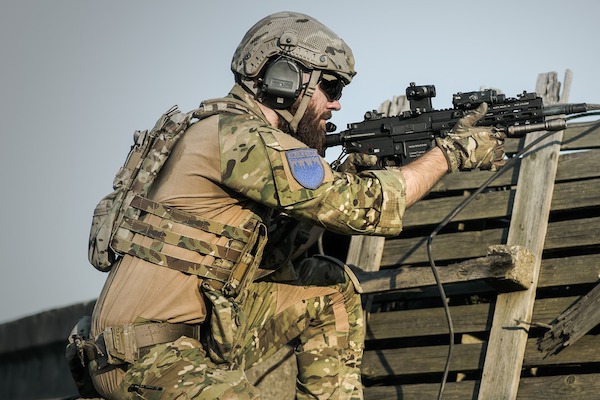
Concealable vests are appealing for subtlety, but they’re not magic. They’re thicker than people expect and leave telltale outlines under shirts and jackets. Up close, most people will notice something is there.
In a prepping context, the real question is what you’re worried about. Patrol officers deal mostly with knives, broken glass, and common handguns. Their daily work involves wrestling with suspects, running, and climbing in and out of vehicles. For them, comfort, mobility, and concealment matter more than occasional rifle threats.
Preppers thinking about worst-case events — extended civil unrest, targeted attacks, or large-scale emergencies — have a different landscape. In that world, visible armor is less of a fashion problem and more of a deterrent. Many experienced veterans actually prefer potential attackers seeing that they’re armored. It discourages impulsive aggression and makes you a less attractive target.
In short:
-
Concealable soft vests prioritize comfort and discretion but leave you vulnerable to rifles.
-
External hard plates prioritize protection against the widest range of threats, at the cost of weight and visibility.
For most serious emergency scenarios, external plates win the tradeoff.
Threat level ratings and what they really mean
Browsing armor, you’ll quickly run into labels like Level II, IIIA, III, III+, and IV. These aren’t marketing fluff; they refer to standards set by the U.S. Department of Justice’s National Institute of Justice (NIJ). The NIJ defines specific test conditions — bullet type, mass, and speed — and rates armor based on whether it stops those rounds.
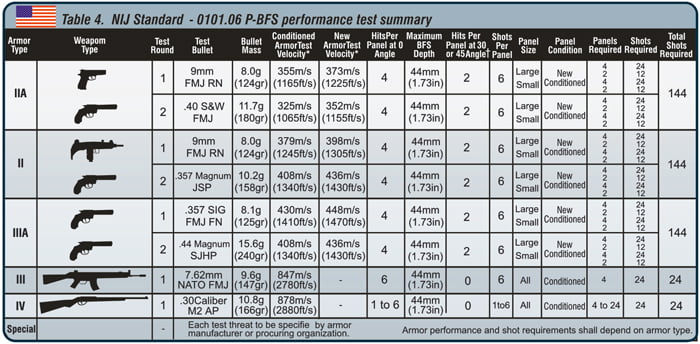
In simple terms:
-
Lower levels (like II and IIIA) are designed around handgun threats.
-
Level III and above are intended to stop rifle threats.
-
The rating says nothing about knives unless the product is separately tested for stab or spike resistance.
Even small changes in bullet characteristics can flip a result from “stopped” to “penetrated.” Factors that matter include:
-
Bullet construction (soft lead vs. hardened steel or tungsten cores)
-
Bullet mass (light vs. heavy projectiles)
-
Velocity (how fast the bullet is moving when it hits)
Barrel length affects velocity, too: the same round fired from a longer barrel can travel significantly faster than from a shorter barrel, changing how armor responds.
To visualize some of this, consider two popular rifle rounds: the .223 / 5.56 (common in AR-15 platforms) and the .308 / 7.62×51 (common in many hunting and battle rifles).
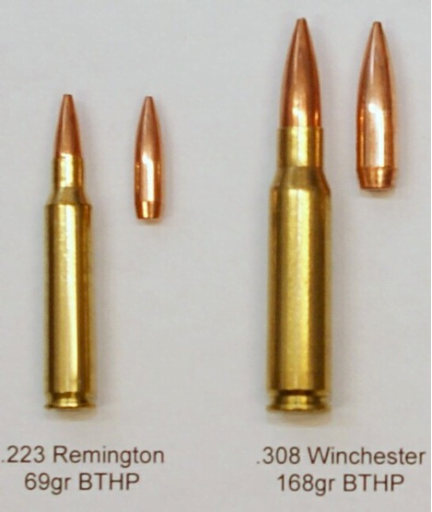
The NIJ standards in current use are somewhat dated and are slowly being updated. Manufacturers and testers have pushed beyond the original categories, which is why you see products marketed as “Level III+” even though III+ is not an official NIJ level.
The “plus” label is usually meant to signal improved performance over basic Level III — specifically, the ability to stop faster .308 loads and common AR-15 rounds like M193 and M855 that basic Level III might not reliably defeat.
However, because III+ is marketing language rather than a rigorous NIJ category, some companies use it loosely. The only way to be confident is to look at detailed test data: exact rounds fired, velocities, number of hits, and the conditions under which tests were done.

A quick warning: some sellers claim fictional ratings like “Level 5” or use confusing labels like “Level 5 (NIJ III)” to trick buyers. There is no NIJ “Level 5.” Any product using that language is either misinformed or intentionally misleading.
Knife and spike protection are handled by separate standards because stabbing behaves differently from bullets. The main concern is pointed weapons working between fibers in soft armor. If you care about knives or improvised spikes, look for specific “spike level” ratings in addition to bullet ratings.
Most common gun threats and how often armor will help
We would love to say “this armor level protects you from X% of real-world threats,” but ammunition data isn’t that clean. What we do know is which calibers sell most frequently in the civilian market, which helps build a rough picture.
Here’s a simplified snapshot of ammo sales volume across popular calibers:
-
9mm (pistol): 19.3%
-
.223 / 5.56 (rifle): 15.2%
-
.45 (pistol): 10.6%
-
.22 (pistol/rifle): 8.3%
-
12 gauge (shotgun): 7.9%
-
.40 (pistol): 6.7%
-
.308 / 7.62×51 (rifle): 4.7%
-
.380 (pistol): 4.2%
-
7.62×39 (rifle): 3.9%
-
.357 (pistol): 3.1%
-
.30-06 (rifle): 1.9%
Those eleven categories make up about 85% of the ammo market. Beyond that, sales drop sharply across hundreds of niche calibers.
If we group all this roughly by armor class and ask, “What are my chances of surviving a random gun threat if I’m wearing a particular level?” we get something like this:
-
Level IIa: about 35%
-
Level II: about 40%
-
Level IIIa: about 60%
-
Level III: about 70%
-
Level III+: about 95%
-
Level IV: about 98%
These aren’t precise numbers, but they show the pattern: moving from soft armor to rifle-rated armor dramatically increases your odds, and upgrading from III to III+ and IV closes specific gaps with common rifle rounds.
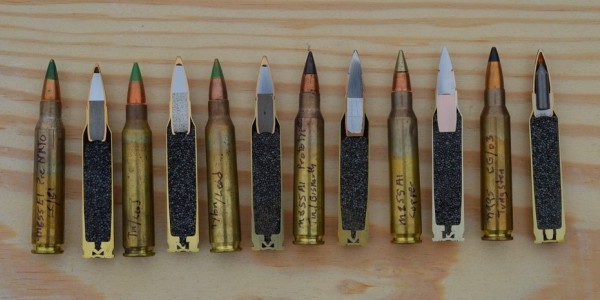
Within the AR-15 world (.223 / 5.56), two rounds are especially important:
-
M193: light and very fast (around 3,150 feet per second)
-
M855 “green tip”: slightly slower (around 2,950 fps) but with a hardened steel penetrator core
Basic Level III steel plates often stop M855 but can fail against high-speed M193. Basic Level III ceramic or plastic plates often stop M193 but can fail against M855 green tips. Level III+ plates are designed to bridge that gap and stop both at realistic velocities.
Newer designs like the M855A1 EPR were specifically engineered to defeat common steel plates. They are still relatively rare in civilian hands, but their existence reminds us that armor must always be viewed as a moving target: technology on both sides evolves.
What armor level makes sense for most people?
For serious prepping with hard armor, the practical choice usually comes down to Level III+ or Level IV.
-
Basic Level III is borderline. It can handle many threats but leaves you exposed to some of the most common rifle rounds used in AR-15 and hunting rifles.
-
Level III+ fills that gap by stopping both typical .308 loads and the problematic M193 and M855 .223 rounds at realistic speeds.
-
Level IV goes further and adds protection against powerful armor-piercing rounds like .30-06 AP black tip, but costs more and is typically heavier and bulkier.
The step up from Level III to III+ is relatively small in weight and price but large in benefits. Often you add about half a pound and a modest cost increase to gain coverage against a wider set of rifle threats.
Jumping from III+ to IV is a personal decision. If you’re worried about very powerful rifles, specialized ammo, or you simply want the maximum realistic protection, Level IV can be worth it. Just remember that weight, bulk, and cost all increase.
For those who decide that soft armor is enough — perhaps because of lifestyle, budget, or legal constraints — Level IIIA is generally the minimum worth considering. It offers significantly better coverage against powerful handgun rounds and shotguns than Level II, and the added margin matters in real emergencies.
Steel vs. ceramic vs. UHMWPE plastic plates
Rigid plates are made from three main materials:
-
Steel
-
Ceramic
-
UHMWPE (Ultra-High Molecular Weight Polyethylene) plastics
Many plates are hybrids (composites), combining these materials to balance cost, weight, and performance.
Steel plates
-
Lowest cost
-
Thinnest profile
-
Heaviest weight
-
Extremely durable and long-lived
-
Handle many repeated hits without failing
-
Require anti-spall coatings to control dangerous fragments
-
Often stop common M855 green tip rounds but may fail against fast M193
Steel is attractive because it’s tough, relatively cheap, and thin. You can treat it roughly, store it for years, and expect it to work. The main drawbacks are weight and the spalling problem — bullet fragments spraying out when a round is stopped.
Ceramic plates
-
Typically most expensive
-
Thickest profile
-
Much lighter than steel
-
Shorter shelf life and less tolerant of abuse
-
Generally better against extreme threats and some armor-piercing rounds
-
May crack or lose effectiveness after multiple hits in the same region
-
Performance against M855 or M193 varies by exact ceramic material and design
Ceramic plates are lighter and often more comfortable to wear. They don’t produce steel-like spalling, because the plate itself breaks apart and traps fragments. But they don’t like being dropped, baked in hot cars, or shot repeatedly in the same spot.
UHMWPE (plastic) plates
-
Middle ground between steel and ceramic in cost
-
Lightest option — some even float
-
Good multi-hit capability but more backface deformation (bulge) behind the plate
-
Often vulnerable to common M855 green tip rounds and very fast projectiles
UHMWPE plates can be excellent for people highly focused on weight — especially smaller-framed users or those who anticipate a lot of movement. But their vulnerability to certain steel-core rounds must be understood and accepted.
Spalling and why anti-spall coatings are critical
When a steel plate stops a bullet, the impact doesn’t simply vanish. The bullet crumbles into high-speed fragments that spray outward. This debris, called spall, can shred your neck, arms, or face even though the plate itself worked as advertised.
Ceramic and plastic plates don’t have this issue in the same way because they break inward and trap the bullet’s remains.
For steel, the industry solution is a thick anti-spall coating that behaves like a sticky, rubbery sponge. It captures and slows fragments so they don’t blast outward into unprotected areas.
Because of that, any prepper buying steel plates should consider anti-spall coatings non-negotiable. Bare steel plates are simply not worth the risk. Look for plates with robust, well-reviewed coatings that have been tested repeatedly under realistic conditions. Pay attention to tests that show what happens after multiple hits in the same zone — a brittle or thin coating can split and peel away, exposing you to a burst of fragments after the second or third impact.
Which armor material is right for you?There is no universal “best” material. The right choice depends on:
-
Your budget
-
Your physical fitness and tolerance for weight
-
The threats you’re most concerned about
-
How often you’ll wear the armor vs. store it
-
How rough you are with your gear
For many everyday civilians focused on realistic emergencies, steel plates with proper anti-spall coatings remain a strong option. They’re affordable, durable, and easy to store for years. The tradeoff is weight, which can be punishing if you’re not in good shape or you expect to move quickly over long distances.
Ceramic and UHMWPE plates are attractive because they’re lighter and more comfortable, especially during extended wear. This matters a lot in real movement: climbing stairs, sprinting, crouching, or carrying a pack. Extra agility can be more valuable than people realize, especially for those who don’t train like professional warfighters.
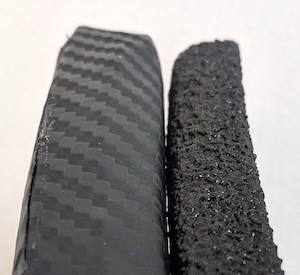
As a rough comparison, a typical Level III+ ceramic plate might be around 0.85 inches thick, where an equivalent Level III+ steel plate with coating might be around 0.55 inches thick. But the steel plate can weigh nearly twice as much. Multiply that difference by two plates (or more) and add your carrier, gear, and pack, and the weight gap becomes very real.
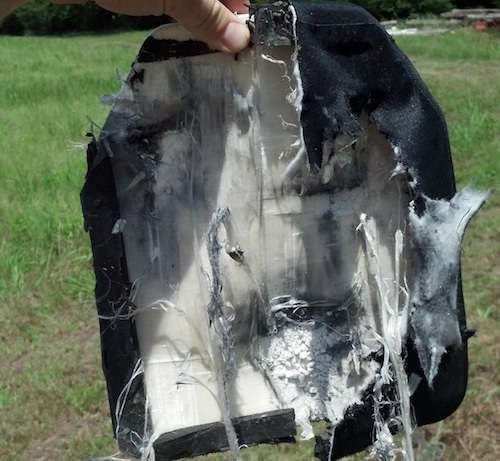
Ceramic plates might fail after multiple strikes to the same general area, while steel can usually endure many more impacts. On the other hand, many real-world shootouts don’t involve dozens of direct hits to the exact same spot, and people who have taken hits in ceramic plates often walk away alive.
Durability stories from both sides illustrate the extremes:
-
Ceramic plates surviving sledgehammer blows and still stopping rounds
-
Steel plates being run over by vehicles and functioning as if nothing happened
In practice, the differences often come down to how you expect to use the armor:
-
For long-term, rugged storage with occasional use and a tight budget, steel has strong appeal.
-
For frequent training, long patrols, or users who already carry heavy gear, weight savings from ceramic or UHMWPE can be worth the cost.
Some serious preppers split the difference, using a mixed setup: for example, a lighter ceramic front plate (where mobility matters most) and a heavier steel back plate (where comfort is less critical).
Body armor sizes and how to wear plates correctly
Armor sizing is not the same as clothing sizing. Returns are also often limited or impossible, especially for ceramic plates that may be compromised by rough handling. That means getting the size right matters a lot.
Soft, concealable vests have their own detailed sizing charts that take into account chest, waist, height, and sometimes gender. You’ll need to follow your chosen manufacturer’s instructions closely.
Rigid plates, though, are simpler. Most follow either military ESAPI dimensions or a civilian variant.
Standard ESAPI plate sizes:
-
Extra Small: 7.25 x 11.5 inches (typically under 36" chest)
-
Small: 8.75 x 11.75 inches (around 36–38" chest)
-
Medium: 9.5 x 12.5 inches (around 38–42" chest)
-
Large: 10 x 13.25 inches (around 42–44" chest)
-
Extra Large: 11 x 14 inches (around 44–48" chest)
Common civilian plate sizes:
-
Extra Small: 8 x 10 inches (most women)
-
Small: 8.75 x 11.75 inches (larger women / smaller men)
-
Medium: 10 x 12 inches (most men)
-
Large: 11 x 14 inches (larger-framed men)
In reality, most people end up choosing either a 10 x 12 or 9.5 x 12.5 plate.
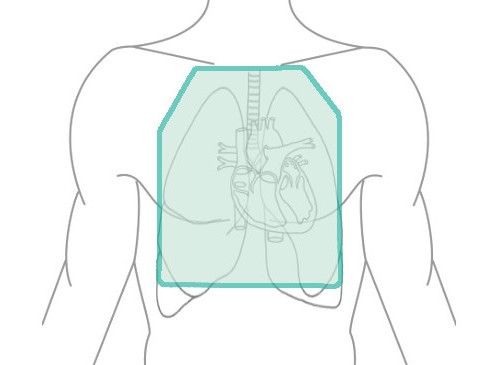
Plates are not designed to cover your entire torso. Their job is to guard vital organs — heart, lungs, and parts of the upper liver and kidneys.
A common mistake is wearing armor too low. Correct placement starts with the top edge of the plate touching your sternal notch — the small V-shaped dip where your collarbones meet in the center. The plate should then extend down just to the bottom of your ribcage or the lower margin of your lungs. Anything lower gets in the way when sitting or bending and doesn’t protect significantly more vital tissue.
Also note that actual plate dimensions may be slightly smaller or larger than labeled, sometimes by a few tenths of an inch. That can change how plates fit in carriers, especially if you mix ESAPI-sized plates with civilian carriers or vice versa. A mismatch can cause plates to ride too low or shift inside the pouch.
SAPI vs. shooter vs. swimmer cuts
Plate “cut” describes the shape of its outline — particularly how the upper corners are trimmed to allow shoulder movement.
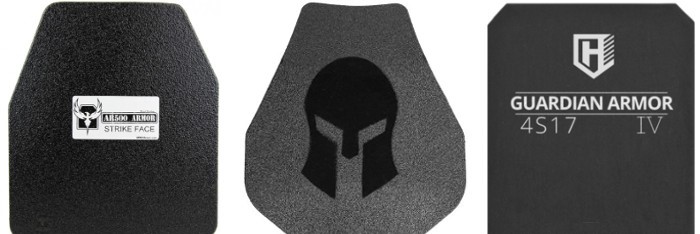
Common cuts include:
-
Rectangular: Simple rectangles with sharp corners; sometimes used on the back.
-
SAPI: Standard military pattern with modestly trimmed top corners.
-
Shooter cut: More aggressively trimmed upper corners to allow better shouldering of rifles.
-
Swimmer cut: Deeply trimmed on all sides for maximum mobility and minimal hindrance to arm motion.
More aggressive cuts remove material in areas where you don’t strictly need coverage while aiming or reaching. This reduces weight and makes it easier to get a solid rifle stock placement and a natural pistol stance.
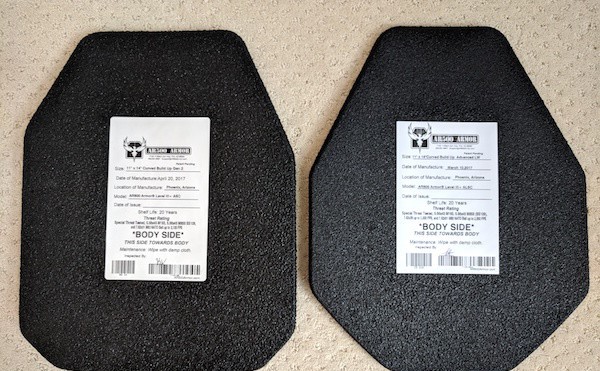
Some plates even have asymmetrical cuts for right- or left-handed shooters — one side more trimmed than the other to give extra space to your dominant-side shoulder.
In most cases, a well-fitted shooter cut offers an ideal balance: good protection across the chest with enough clearance to move, shoot, and handle tools. Swimmer cuts are more specialized and sacrifice more coverage in exchange for maximum mobility. Rectangular plates are more often used on the back, where shoulder movement is less critical, but may not fit all carriers.
Curved vs. flat plates and why comfort matters
Your chest is curved; a completely flat plate isn’t. That mismatch can make flat plates feel awkward, dig into your shoulders, and stand off strangely from your torso.

Plates can be:
-
Flat
-
Single-curve (curved side-to-side)
-
Multi-curve or “triple curve” (curved side-to-side and top-to-bottom, sometimes with additional shaping)
Single-curve plates wrap from one side of your chest to the other, improving comfort and reducing the “shield” feeling across your front. Multi-curve plates add vertical shaping so the top edge tucks in toward your chest while the bottom flares slightly away, mirroring the natural shape of your ribcage and shoulders.
Aggressively curved plates, especially in lighter materials like ceramic and plastic, can feel almost custom-shaped and distribute weight nicely. The tradeoff is complexity and, sometimes, cost. For steel plates, extremely sharp bends can weaken the metal, so manufacturers are limited in how far they can go.
For back plates, some people prefer a flatter profile, especially if they have a straighter upper back or expect to wear packs. Others like a gentle curve that hugs the spine.
You also have to think about how curves interact with your carrier. A plate that’s too flat may bulge awkwardly at the top. A plate with extreme curves may make attaching pouches or accessories on the front panel feel odd.
In practice, a standard multi-curve shooter-cut plate is often the sweet spot of comfort, coverage, and usability for most preppers.
How to buy body armor without getting burned
The civilian armor market is cluttered and inconsistent. Some of the best plates are made by a small handful of manufacturers who mostly sell to militaries and law enforcement, then license or “white-label” their products to other brands for civilian sale. Meanwhile, many retail sites have poor product descriptions, missing data, and confusing or even incorrect claims.
Common problems include:
-
Mislabeling a Level IIIA plate as “III+” or implying rifle protection where there is none
-
Vague claims like “stops green tips!” with no velocity data or formal test results
-
Missing information on whether a plate is standalone or ICW
-
Sloppy or incomplete warranty and return policy details
Behind the scenes, companies like Hesco, HighCom, LTC, and TenCate manufacture plates that then show up under various brand names. On forums, you’ll often see people arguing about “Brand X vs. Brand Y” when both plates came off the exact same production line.
When we evaluated options, we looked for armor that:
-
Provides at least Level III+ performance against realistic .223 and .308 threats at stated velocities
-
Has genuine NIJ ratings or an equivalent, transparent test process
-
Comes from companies with clear, honest specs and openly published ballistic data
-
Is reasonably priced for normal people (often under $500 per plate, and frequently much less)
-
Uses shooter cuts and offers curved options for comfort
-
Offers robust anti-spall coatings if using steel
-
Works as standalone armor with no ICW complications
-
Comes from vendors who respect civilian buyers, with usable websites and straightforward ordering
We gathered detailed data on roughly ninety plates from over two hundred forty products, narrowed them to top performers, and compiled them into comparison charts and spreadsheets. That deeper research highlights a handful of options across weight, material, and budget ranges that stand out as practical choices for real-world prepping.
In the end, the right armor is the one you can afford, understand, and actually wear when things go bad — not just the one that looks best in a catalog.







